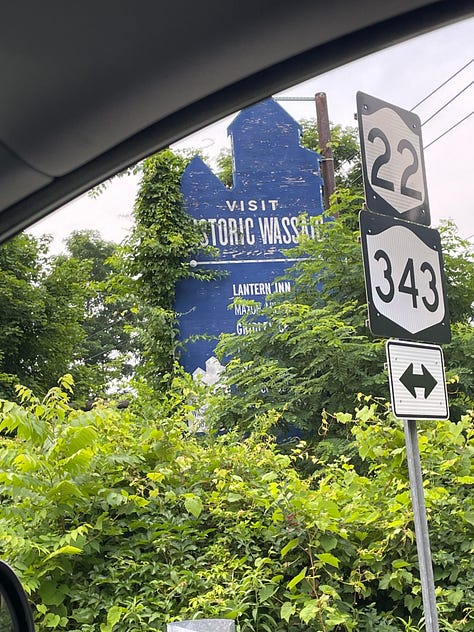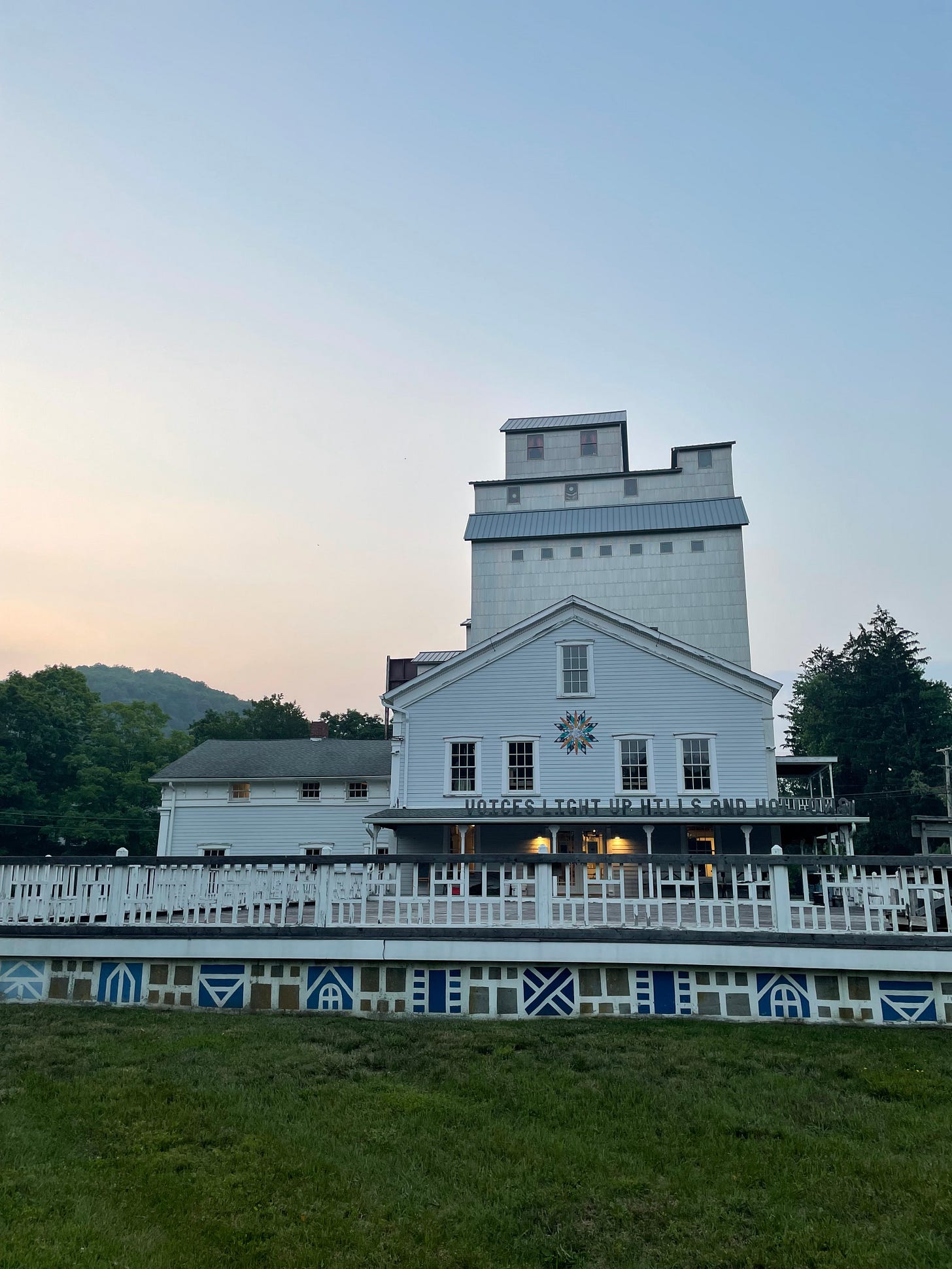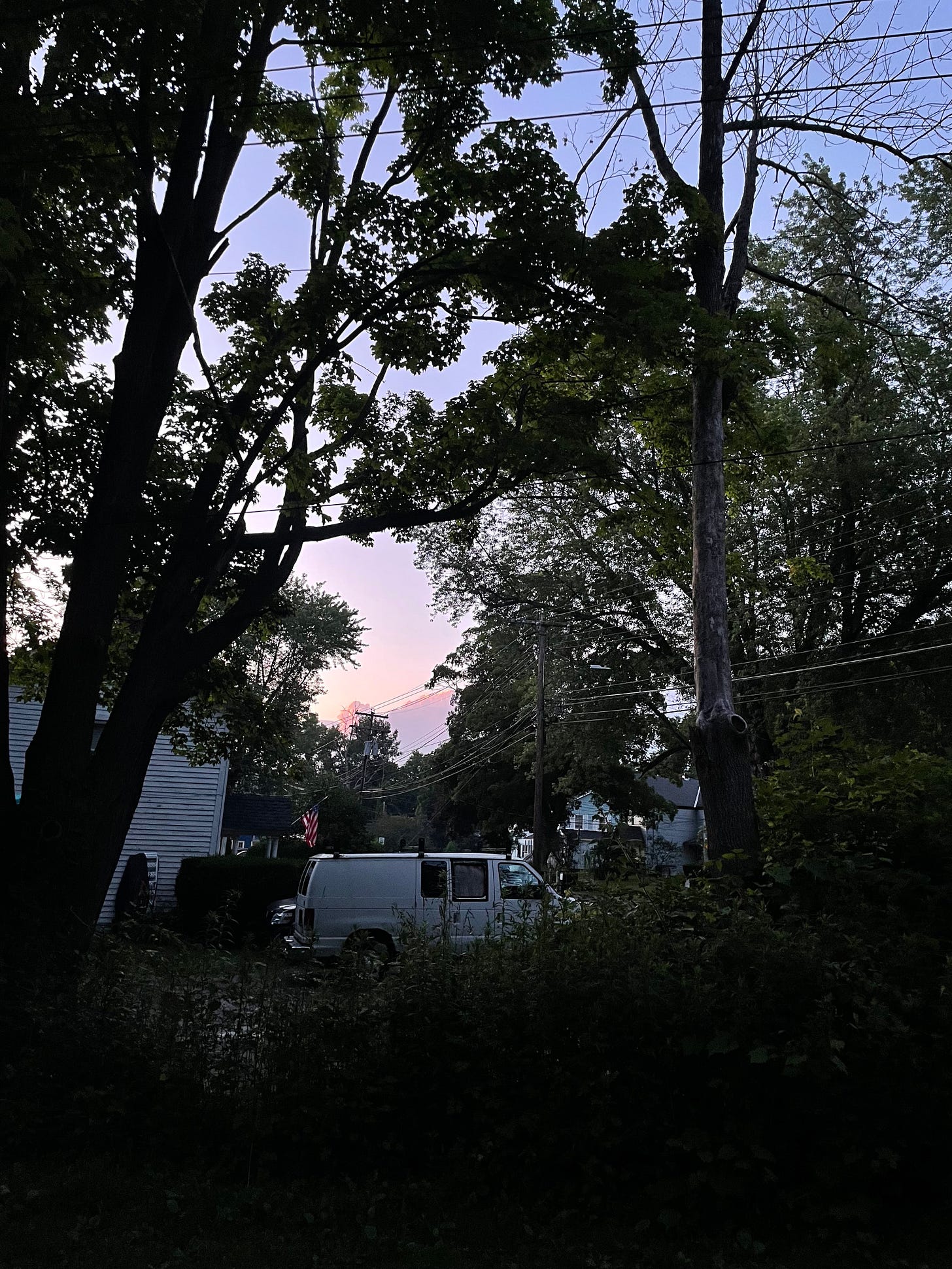First, I want to welcome all the newcomers to this space of hair ! If you swung in on Heavy is the Crown, you’ve gotta know that some essays here are rooted in history, others fill the sacred space around works of art, and still others approach the daily lived habits of having hair. Monthly, I offer pop culture roundups of all the “Hair Moments” I’ve observed in my little wacky world of content. (And I hope you will start noticing those in your own worlds and share them with me here!)
Our goal is always an expansive and associative exploration of hair, and how hair achieves metaphoric resonance across art and culture. I’m so glad you’re here.
I also wanted to thank an old friend and exquisite writer, Julia Bedell, for recommending me to
last week. If you aren’t reading her luminescent prose over at , you really must. Her missives and dreamy photography of life in Alaska are so atmospheric and just always the perfect poetic pause to a busy day.This week’s newsletter is a slightly different format. I’m pulling in dialogue, conversations about hair that have already begun during my first week as an artist in residence at Wassaic Project in upstate NY. Being in community with artists is my favorite, and I hope some of these shares and musings from our residency will touch your heart as they’ve touched mine. Maybe they’ll spark conversations among your nearest and dearest around how hair acts as an extension of the body, as a vulnerable space, and especially how hair can become a shape that you might safely harbor yourself in.
Big welcome energy.



Half a day and half a world away from family we had been staying with in the Berkshires, we arrived at Wassaic Project with a sleeping baby and a car full of raw material. And a tupperware full of eggplant parmesan. And half a sheetcake with the words “Welco— Ar—” scribbled upon it in yellow icing.
It was my first day at Wassaic Project. We parked near the mill and found a program director to give us a tour: a barn full of artist studios, several houses of shared living space, and a giant iconic seven-story mill building installed with contemporary art. My heart!
Allison hoisted Arlo up on her hip as we wound through the grounds, waving hello to townspeople and greeting other new resident artists along the way. Later on at orientation, cold cans of La Croix gathered beaded sweat in the humidity as smoke from the fires in Canada swept down into the valley overhead. We gathered around two large wooden picnic tables to go over the handbook and introduce ourselves.
Everyone’s work sounds amazing and I can’t wait to see what each person begins to explore here. I am always excited to be in community with other artists like this. When I mention “HAIR CLUB” or even just “hair” to a crowd of people some might be intrigued and want to talk about hair products and maintenance, but when I mention hair to a group of artists who are practiced in engaging with the world in a cross-material way, the resulting conversations are so affirming, and just incredible.
Here are a few snips of conversations we started this week. I say started because that’s what they were: brief and astonishing moments of connection and affirmation that I hope, I promise them, will continue in the weeks to come.
I have asked and received permission to reproduce these conversations anecdotally here, and the names used reflect the artists in residence at Wassaic Project right now, consent-given or changed as requested! I am deeply grateful to house these conversations about hair and for the openness of those sharing.
“So, you write about hair?” Padyn smiles at me dishing salad onto my plate at the welcome dinner.
“Yes! HAIR CLUB!” This is my always response, referencing our collaboration of nearly ten years studying, teaching, and writing hair. Usually I wave my hands, maybe even jazz hands, as a treat.
“So, like, what specifically about hair?” He places the dish down and reaches across for a bottle of wine.
“All of it,” I put my wine glass near his and nod at the red. “How hair achieves metaphoric resonance across art and culture.”
“Very cool.”
“I noticed your hair right away when you walked up,” another artist chimes in, reaching out their wine glass for a generous pour. I smile.
“Thank you! It’s in the in-between right now, but we’re getting used to each other,” I say, placing a bashful hand over my curly bangs. Everyone brings their glasses in to cheers and take a long sip.
“We had sort of a curly hair moment happening on our side of the table,” Padyn said smiling.
It’s true, three of us artists—Padyn, Salvador and myself—plus some of the artists who work at Wassaic, each have curly hair. And not just curly hair: exquisitely classed and completely different textures of curly hair. It was definitely a moment.
Salvador leans into the conversation at this point and says, “So, hair?”
“Yes! HAIR CLUB!” (you know the refrain by now)
I want to pause here and acknowledge something about starting a conversation about hair. Hair can be a space of deep vulnerability. Hair is also of the body. I make it a practice never to directly comment on any part of another person’s body—as, I believe, we all should (boomer moms out there: you hear me?). Too often, people don’t respect hair as part of the way a body takes up space. I have held stories about and witnessed inscrutable moments when someone reaches out and touches someone else’s hair without their permission. (There’s a whole book about it: Phoebe Robinson’s You can’t touch my hair: and other things I shouldn’t have to explain. One of the HAIR CLUB bibles).
I always wait. I always wait to say anything about someone else’s hair until we’ve settled into a conversation about hair and safe space has been generated between us. Even if I want to rush up to that person and gush about their hair: it’s gorgeous! Wow, what an incredible cut! I love the color, I love the shape! The curl definition is unreal! Even if I had the most pure intentions to gas up the other person, make them feel seen, boost their confidence, the fact is that they don’t know me yet. I don’t know what their felt history of hair has been. And I’m not yet a safe space for them.
As expected, upon starting each of these hair conversations at Wassaic, we immediately wandered into tender territory.
Padyn says “Believe it or not, I used to chemically straighten my hair” his eyebrows go up like I know you don’t believe it. Padyn has a gorgeous bed of defined curls, slightly longer on the top and going into shorter defined rings on the sides and around the back of his head. He says “I go to this boy who I’ve grown very fond of in Berlin…he does me right.” Padyn has been living in Berlin for the past year, so the fact that he has found a person, any person that he trusts with his curls is remarkable and I tell him so.
“I know,” he says. “I got really lucky.”
I have this exact conversation with two other people at the table: finding the person you trust to cut your hair and then clinging to them for dear life, even considering following them when they, say, move to Miami, Florida.
Salvador says he grew his hair out over the pandemic. He has a gorgeous mane of bouncy, dark curls. His hair is so actualized, so graceful and really stunning that I have a hard time fathoming when he shares that it still feels new to him.
He says when he was young he had no idea what to do with his curls. I immediately jump in “right!? Was this in the early 2000s-ish?”
'“Yes,” he nods emphatically.
“We had nothing back then! No one knew what to do with our curls.”
Another artist sitting directly across from me, Amelia, nods at this solemnly. She has a gorgeous center-parted mass of wavy blonde hair that squiggles at the ends just past her shoulders.
“When I was little..” Salvador smiles and puts his hand over his mouth as if to say, well we’re just diving right in here aren’t we? I nod, hoping my nod conveys all the complexity that I know hair stories might contain “…when I was little, I got made fun of a lot for my hair. I just wanted to, like, disappear.”
We discuss the expectations that weigh heavy on hair, from family, from society. Lately I’ve been fielding so man stories about people whose parents either would not let them cut their hair even if they desperately wanted to, or people whose parents would only let them grow their hair out long if they “proved they were responsible enough to maintain it.” I think a lot about this, how do you prove you’re responsible enough for your own hair?
“Looking back on it now,” Padyn says, reflecting on his chemically straightened hair in the early 2000s, “I wonder how much I just wanted to—needed to—fit in.”
Perhaps, he says, straight hair meant “straight” to him. Straightening it relentlessly and chemically during his youth in Montana may have been an assimilative tactic. Otherwise, he says, he felt he stood out too much. “Being slightly pudgy and also queer and also curly haired? It was too much for me. So I straightened it.”
I wondered aloud how many of us fell victim to the early 2000s straightening trend. How many of us were, in fact, queer, whether we knew at the time or not. Why people with curly hair feel the need to assimilate at all, to tamp down their gorgeous curls to blend in.
But I knew why.
“Prejudice against curly and textured hair as deep roots, of course, in racism and the desire to push forward a euro-centric beauty standard.”
“Of course,” Padyn agrees. How strange, he says, to have this resonate even as a white kid from Montana. That he would be feeling that assimilative pressure pushing down and down on him enough to straighten his hair. He tells me that his first boyfriend, also with curly hair and also from Montana, also straightened his hair as a kid. Talk about a moment.
As I look around the table, I feel comforted by the way that all of our hair seems to convey a sense of beingness and sure-footedness in our identities—so distinct from one another—even having pushed through those shared moments of assimilative cultural pressures we’ve all experienced in some form.
Another artist leans over at this point and says “When I saw you walk up I thought, that is the coolest haircut ever! That’s what I want my hair to look like.”
“Wow! Thank you,” I laugh and mean it. “My hair person calls it a ‘Shullet,’ a shag with mullet tendencies.”
“Well, it’s great. I used to have a bob, and for some reason I’ve been growing mine out. But without a real shape, I feel like it’s gone kind of blah—it freaks me out.” I get it. Having hair that isn’t an intentional shape is unmooring for me too.
“I actually had to have my hair fixed this week because of that,” I say. “My hair person, who I love and whom I’ve been going to for years and years, gave me my very first bad haircut last week. I had to go and get it fixed.”
I field the various gasps and “no! it looks great!”s that cascade my way with sincere gratitude (sob). Without the distinct shape the first go-round, I didn’t understand completely who I was.
If you’re new here (welcome!), you should know that hair is always a journey to me, and the journey I am currently on is: growing out my hair. The awkward phase is alive and breathing in my world! When does your hair enter the awkward stage?
As the sun sets beyond the tree-covered mountainous hills to the west, conversation turns to a mutual love of curly bangs. Salvador would like to try them, but his hairstylist keeps suggesting that he wait, think it over. Kelly laments that she’s not sure she’s up for the maintenance.
Inwardly, I re-dedicate myself to my hairstylist’s artistry, mentally thanking her for her labor on my hair. It feels almost superstitious, like a prayer.
After all, she got me from blob to where it is now—somewhere between angled lob and growing “shullet”—and for that I am very grateful.
If you’ve made it this far, thank you for being here :) Next week, we will return to talking about hair and art.
Much love from the woods, xo








Thanks for the shoutout! It’s extremely fitting that I’m reading this in a hair salon... your residency sounds wonderful and I love the snippets (that’s a hair joke? Maybe?) you shared. Enjoy xx